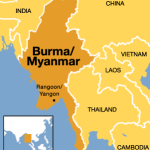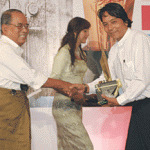
Khin Maung Saw – Burma or Myanmar? Burmese or Burman? Rangoon or Yangon? Introduction: In May 1989 the present ruling military junta called the State Law and Order Restoration Council (SLORC) reintroduced back the indigenous name “Myanmar” for…
Semper nulla Nunc libero dictumst magna iaculis In mattis at quis. Nulla suscipit risus mauris et nulla et sit id dapibus Quisque. Vitae sapien Curabitur interdum et magnis Donec felis consequat tellus et.
Interview with the family members of dead student by fellow students for their student union newsletter – (from “Sethmu Ahman” newsletters, issue (4), 17.9.1988)
A Secret Early Morning Funeral Without Ceremonies but Full of Grief and Grievances
March 14, 2011
We, the editor team of ‘Sethmu Ahman’ newsletter, were able to have an exclusive interview with a family member and close friends of Ko Phone Maw, a fifth year chemical engineering student. His life was takne in March students’ demonstration, which occurred in the compound of Rangoon Institute of Technology (RIT). The interviewees include Mar Mar Win, elder sister of Phone Maw, and Khin Maung Htun (BSc.History), Win Win Myint (BSc.Physics), and Min Htut, a third year zoology student, who all are friends of Phone Maw. The following are their original words and feelings.
Firstly, we inquired about his family’s private affairs. Mar Mar Win answered that his parents are U Aubar and Daw Amar (both deceased), and Phone Maw is the fourth son among the five of his siblings. She added that the eldest brother Kyaw Win, the other elder sister Mar Mar Ei, and herself opened a sale shop in Mingalar market to make a living for their family. The parents took care of Phone Maw and the youngest sister Ni Ni Aung, a 2nd year chemistry student in the then Rangoon University( Hlaing Campus).
About Phone Maw’s death, Mar Mar Win explained that her family did not learn of his death immediately on 13.3.88, the very day that tragedy happened. They only heard the news over the radio at 1:00 in the afternoon of 14.3.88, while they were in the market. His younger sister got the news from the university where she was studying.

Contributed by A Reader from Rangoon
March 1, 2011
The following information is about Shwechinthae Social Service Group, a charity organization opened at Shwechinthae monastery in Shwe Bo city in Sagaing division. After thoroughly reading the organization’s papers and records, asking patients and volunteers, I wrote this article mainly focusing on itself and its activities without mentioning the names of present activists of its.
The Beginning of the Beginning
Shwechinthae library was opened on 18.12.2000. Members of library who were graduates, but had no occupation, launched a free teaching program for 10th standard students who cannot afford schooling.
MoeMaKa reporter (006)
January 11, 2011
Photo – (Phatsayar journal- 4.1.2011)
At 4:30 am this morning, the writer and director Maung Wunna passed away of cancer at his home.
4 Main Religions in Burma with Numbers July 26th, 2009 According to Burmese local journal called “Open” from Rangoon, one article mentioned of numbers of worshipers of each religion and their numbers of temples and churches in 2007. (It did…
Pagodas and What They Mean to Buddhists
Khin Myo Chit
Pagodas: Romance and Legend
It all began, long before I was old enough to understand that stupas and pagodas symbolize the great wisdom and compassion of the Buddha to whom we owe our way of life, our philosophy, our culture and above all, our fortitude that helps us to survive all trials that life has to offer.
My earliest memories are of the green wooded hills rising out of the wide flowing river Ayeyawady. On every hill top I saw one lone pagoda or a group of threes and fours, some gilded, others whitewashed and gleaming. Since I had many opportunities to make trips up and down the river, pagodas on hill tops remain one of my happiest recollections of childhood.
Of the first things I learned about pagodas nothing had to do with the intellectual side of Buddhism but all was full of colour and romance. Once, while we were crossing the river from Mandalay to Sagaing in a small flat-bottomed boat (it was long before the beautiful Inwa bridge was built) we headed towards the long dark range of thickly wooded hills, crested with shining pagodas, and the tinkling bells from their htis as the fretted wrought iron spires on top of the pagodas are called, chimed welcome to us. Colonnaded stair-ways zig-zagged through the flowering foliages. They looked so inviting that I could hardly wait to run up the steps and reach the pagodas up there.

by Khin Myo Chit
Of the many things that intrigue the visitor to the precincts of the Shwedagon Pagoda, nothing is so baffling and complicated as the figurines of mythical animals, each perched on its red signboard at the eight points of the compass.
Keeping the great stupa on the right, the visitor starts at the northeast comer, where the figure of the mythical garuna bird represents the sun, the ruling celestial body on Sunday. The unwary visitor probably does not have an inkling that he or she is being taken on a tour through the planetary regions, at least not yet.
A well-meaning friend may tell the visitor that the days of the week are assigned respectively to each point of the compass, each with its ruling planet or celestial body and its mythical symbol.
“But there are only seven days in the week. One point of the compass will be vacant,” the visitor ventures to comment; the visitor of course has not taken into account Myanmar ingenuity in taking liberties with the days of the week. The midweek day, Wednesday, is split into two parts so that the distribution is even.


Modern Burmese Poetry
by Maung Tha Noe
October 21, 2008
When the BBC asked me in a recent interview what books the youth in Burma today are reading, I told them our boys and girls are too busy looking for means of survival to bother about literature. The interviewer retorted to the effect that someone in a Rangoon bookshop had told her they do read computer books and economics books. I told her that computer books or books on business management are not literature, at least not imaginative literature. The young people today are not reading the kinds of books we used to read in our student days – books by Shwe-udaung or Bhamo Tin Aung, novels by D.H. Lawrence or George Orwell, or the Rubaiyat of Omar Khayyam or Mayakovskiy’s Cloud in Trousers.